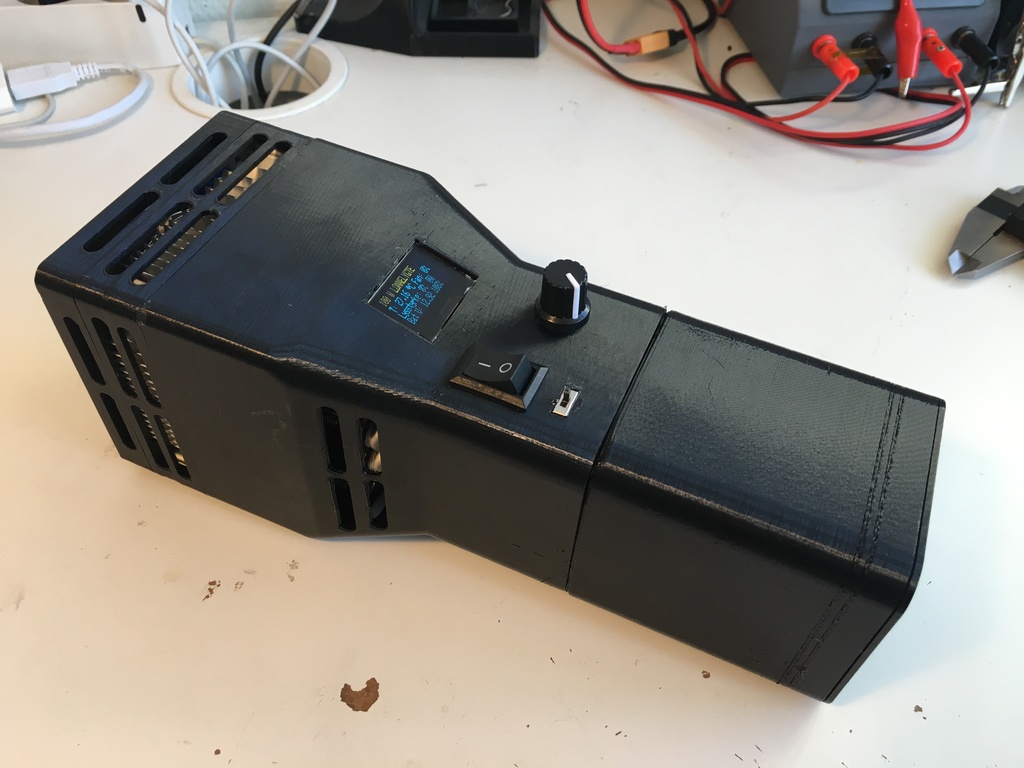
100W Flashlight
thingiverse
It appears you've provided a list of links to various components for building a battery management system (BMS) and other related electronics. Let's break down the items and discuss their relevance and usage in a practical setting: 1. **100 K Thermistor**: This is used as a temperature sensor, commonly employed in electronic devices to measure temperature changes. In a BMS setup, it helps monitor the battery pack temperature. 2. **Big Switch**: The link provided seems to be for an automotive switch, which could be used in various applications where high current switching is required, such as in a charging circuit or load management within your battery pack setup. 3. **Small Switch**: This could be for low-current switching applications, such as control circuits or indicating signals within the BMS system. 4. **18 AWG Wire**: This refers to wire gauges used for electrical wiring, with 18 AWG being a standard gauge size suitable for many electronics projects, including battery packs and their management systems. 5. **18650 Batteries**: These are popular lithium-ion cells used in various applications from consumer electronics to more advanced power applications like electric bicycles or small robots. 6. **XT-60 Connector**: This is a type of connector commonly used with 18650 batteries for charging and discharging them safely. 7. **18650 BMS (Battery Management System)**: A crucial component for managing the charge and discharge cycles of lithium-ion cells in series or parallel configurations. It ensures safety, efficiency, and longevity of your battery pack. 8. **Battery Capacity Indicator**: This could be a display or indicator that shows the current state of charge (SOC) or capacity of your batteries, helping you monitor their health and usage patterns. 9. **3S Battery Charging Connector**: Refers to connectors designed for charging 3-series lithium-ion batteries, which are typically used in configurations like 3 cells in series. Building a BMS involves careful consideration of safety, efficiency, and the compatibility of components with your specific application needs. The items listed above can be used as starting points but might require adjustments or additions depending on your project's requirements, such as the type of battery cells you're using, the system voltage, current handling capacity, and any additional features (like overcharge protection or low-battery alerts).
With this file you will be able to print 100W Flashlight with your 3D printer. Click on the button and save the file on your computer to work, edit or customize your design. You can also find more 3D designs for printers on 100W Flashlight.
